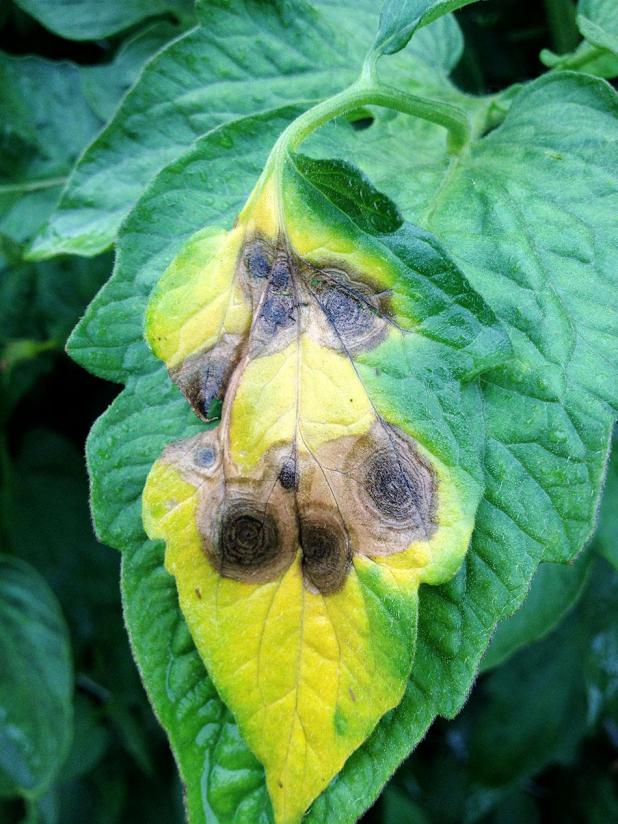
Tomato leaf exhibiting early blight symptoms
—LSU AgCenter/Raj Singh Photo
AgCenter: Watch for tomato diseases
BATON ROUGE — Following the cold temperatures that hit Louisiana tomatoes hard, it is time to watch for diseases that can adversely affect production, said LSU AgCenter plant doctor Raj Singh.
“These include diseases caused by both foliar and soil-borne plant pathogens,” Singh said. “One of the most important and common fungal foliar diseases is called early blight.”
High humidity, free water on the foliage and poor air circulation due to overcrowding of plants favor this disease.
Early blight produces large brown necrotic spots with concentric rings, he said. Severely affected leaves turn yellow and result in significant yield loss.
“Southern bacterial wilt is the most devastating disease of tomatoes,” Singh said. “It is caused by the soil-borne bacterium that enter the roots through wounds.”
Wet soils and high temperatures favor disease development, and disease severity often is higher in soils infested with root-knot nematodes. Infected plants initially go limp but recover overnight.
“As the disease progresses, plants rapidly wilt and die. Dark brown sunken, lesions may be observed on the bases of infected tomato plants,” he said.
Another disease prevalent during spring is white mold, which is caused by a soil-borne fungal pathogen.
The disease is favored by extended periods of cool, wet weather. Infected plants wilt rapidly, collapse and die.
As the disease develops, infected green tissue bleaches out and becomes off-white. The disease is characterized by the presence of white, cottony, fungal strands with hard, black, irregular structures, known as sclerotia, which are found at the infection site.
Buckeye rot of tomatoes is caused by a soil-borne fungal-like microorganism. During rain or sprinkler irrigation, water splashes the pathogen onto the low fruit, and the infection starts.
Later on, the green fruit starts to rot, and lesions that look like buckeyes appear on the fruit. Fruits closer to ground are the first to be infected.
Early and accurate identification of any pathogen plays a critical role in effective management of these diseases.
Commercial growers and home gardeners must adopt integrated disease management strategies to combat these diseases, Singh said.
Good management practices, including growing healthy seedlings or buying disease-free transplants, choosing sites with well-drained, fertile soils, planting at proper spacing for improved air circulation, minimizing extended periods of leaf wetness, providing proper nutrition during the growing season, and judiciously using chemicals listed for commercial or home tomato production.
